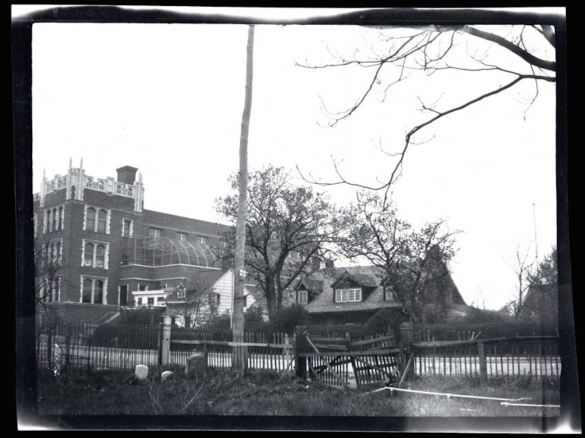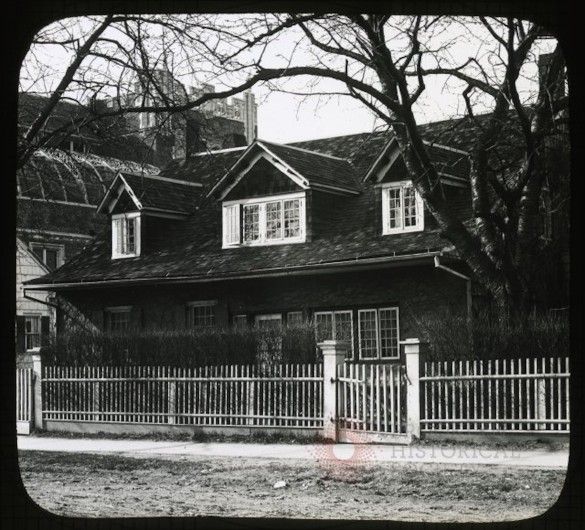Why Lady Moody’s House Must Be Saved

As we reported last week, the city’s Landmarks Preservation Commission (LPC) had planned to remove 98 sites from its list of potential landmarks today, an effort to clear a backlog of applications. On the list for almost 50 years was the historic Lady Moody’s House in Gravesend. Fortunately, thanks to pushback from politicians and preservationists, the vote was postponed until after January. Lady Moody’s House remains safe on the calendar – for now.
In the meantime, we’ve reached out to historian Joseph Ditta, author of “Then & Now: Gravesend, Brooklyn” and a reference librarian at the New-York Historical Society, and asked him to share the history of the house, how it acquired its name, and why it is worthy of protected status. Here’s what he told us:
The house at 27 Gravesend Neck Road has had many names in its long history. Although it stands on property that originally belonged to Lady Deborah Moody (c. 1586-1658), the founder of the Town of Gravesend, there is no definite proof that the house is the one she occupied.
While it is entirely possible that some portion of the structure dates back to the 17th century, the shape we see today is of a house from the early-to-mid-18th century built in the style commonly called “Dutch Colonial.” (The problem with the term “Dutch Colonial” is that most houses built in this style were erected after New Amsterdam became New York, and after the American Colonies became the United States. But names stick.) This house was long associated with the descendants of Ferdinand Van Sicklen, who bought land in Gravesend in 1669. It was eventually inherited by one Cornelia (Van Sicklen) Hicks and her husband, Thomas, and was known, from 1842 until 1906, as the Hicks Homestead.
In 1906 the house was sold to William E. Platt, a real estate developer. This sale gave rise to one of the property’s other names, the “Hicks-Platt House.” William Platt’s wife, Isabelle, set about “restoring” the house to her vision of how a colonial building should have looked. She published an article about the house and what she did to it–“An Old Colonial Homestead Born Again”–in the June 1909 issue of Country Life in America. One of the photo captions to that article reads “the Lady Moody Homestead,” and it is from there that the misnomer has stuck these 105 years. The Platts eventually sold the house, and it has changed hands multiple times over the last 90 years or so. The current owners bought it around 2005.

Whether or not the house ever belonged to Lady Moody is a moot point. The residence stands at the center of Gravesend, across the street from its ancient cemetery, and next door to P.S. 95, which has occupied that site since 1838. (Above is a wonderful view from the collections of the New-York Historical Society, dated after 1915, taken from inside the Gravesend Cemetery, showing the Moody House at right and P.S. 95 at left). It has been a constant, visual reminder to this community of its history, and provides a link (however nebulous) to its remarkable founder.
Architecturally, the building is one of a handful of surviving “Dutch Colonial” farmhouses, only a small portion of which have been designated by the LPC. True, 27 Gravesend Neck Road has been considerably altered, but LPC has designated other buildings that are far from pristine (such as this church on Staten Island) solely for their historical associations.
The work of the LPC has always progressed at a glacial pace. Some designated sites were calendared for many years, and heard several times, before they were finally landmarked. Take, for example, the Hubbard House, also in Gravesend, at 2138 McDonald Avenue (here’s the designation report). This 1830s “Dutch Colonial” farmhouse had been calendared some time before October 21, 1997, the date of its first public hearing. Nothing happened between then and June 24, 2008, the date of its second public hearing. Nothing was decided at that hearing either, and the meeting was “continued” until January 13, 2009, when the commission finally voted to landmark the house. If that house had been de-calendared between 1997 and 2009, it would never have been designated and would possibly have been lost to the massive developments that have swallowed up the rest of the same block.

These are properties that in some cases took years to get on their radar. And, as we’ve seen by the example of the Hubbard House, once a property is on that radar, it often takes decades for anything to happen. If the LPC is intent on clearing out its perceived backlog, perhaps it should overhaul its sluggish procedures, rather than drop all interest in these worthy sites. Jettisoning them practically ensures that some will be demolished or altered.



